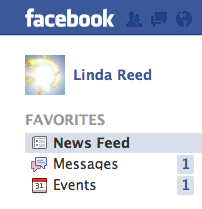Just a little tiny tirade
 Social media is the new black, isn’t it? Even those who onced looked down their noses at these new forms of communication or perhaps harbored a fear of the unknown now embrace the power of this medium. Revolutions are started and overnight marketing sensations begin with one little Tweet or post on Facebook.
Social media is the new black, isn’t it? Even those who onced looked down their noses at these new forms of communication or perhaps harbored a fear of the unknown now embrace the power of this medium. Revolutions are started and overnight marketing sensations begin with one little Tweet or post on Facebook.
School districts wrestle with the impact of social media that comes along with open, BYOD policies. Several years ago, the school at which I taught stopped trying to ban cell phone use during the school day. I can’t begin to tell you what a difference it made to do hall duty and not have to nag at cell phone users to put away their devices. Casual hallway interactions with students became about 100% more positive. For the most part, students embrace the rule that it is okay to use their phones in the hallways, at lunch or during study periods, but not during a class. It is an authentic lesson taught and learned.
Many technology directors mourn the good old days when they had control over “the network.” Back then, they dictated content on every machine in a bulding, adding software via a CD, entering a registration code and creating a school-wide standard. Now, many educators use Twitter and other web-based social media sites to communicate with students and parents, as well as for their own personalized professional development.. However, these sites are often blocked at school by the almighty filter.
Here is what I don’t understand–why is the filter used for a second grade classroom the same used for a tenth grade classroom?  Should one size fit all? Why should a teacher have to ask permission to access any website on his or her computer? This happens all the time.
Should one size fit all? Why should a teacher have to ask permission to access any website on his or her computer? This happens all the time.
The filtering effort is obviously an attempt to keep students “safe” online. The hazards of social media sites loom large. However, students are walking into classrooms with more computing power on their phones than an entire hallway of classrooms had only a few years ago. Isn’t this the ultimate teachable moment? Shouldn’t we teach teenagers to be both responsible and appropriate consumers and producers of digital infomation? Instead, we hide them behind a filter. What sense does that make when the filter can be easily skirted by smartphones that reside in the majority of student backpacks?